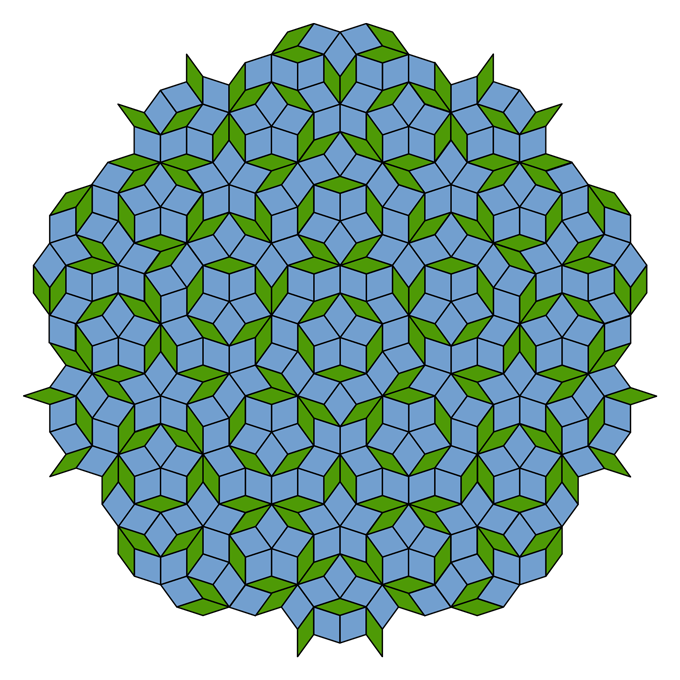In an instant, the bomb obliterated everything.
The tower it sat on and the copper wires strung around it: vaporized. The desert sand below: melted.
In the aftermath of the first test of an atomic bomb, in July 1945, all this debris fused together, leaving the ground of the New Mexico test site coated with a glassy substance now called trinitite. High temperatures and pressures helped forge an unusual structure within one piece of trinitite, in a grain of the material just 10 micrometers across — a bit longer than a red blood cell.
That grain contains a rare form of matter called a quasicrystal, born the moment the nuclear age began, scientists report May 17 in Proceedings of the National Academy of Sciences.
Normal crystals are made of atoms locked in a lattice that repeats in a regular pattern. Quasicrystals have a structure that is orderly like a normal crystal but that doesn’t repeat. This means quasicrystals can have properties that are forbidden for normal crystals. First discovered in the lab in 1980s, quasicrystals also appear in nature in meteorites (SN: 12/8/16).
 Penrose tilings (one shown) are an example of a structure that is ordered but does not repeat. Quasicrystals are a three-dimensional version of this idea.Inductiveload/Wikimedia Commons
Penrose tilings (one shown) are an example of a structure that is ordered but does not repeat. Quasicrystals are a three-dimensional version of this idea.Inductiveload/Wikimedia Commons
The newly discovered quasicrystal from the New Mexico test site is the oldest one known that was made by humans.
Trinitite takes its moniker from the nuclear test, named Trinity, in which the material was created in abundance (SN: 4/8/21). “You can still buy lots of it on eBay,” says geophysicist Terry Wallace, a coauthor of the study and emeritus director of Los Alamos National Laboratory in New Mexico.
But, he notes, the trinitite the team studied was a rarer variety, called red trinitite. Most trinitite has a greenish tinge, but red trinitite contains copper, remnants of the wires that stretched from the ground to the bomb. Quasicrystals tend to be found in materials that have experienced a violent impact and usually involve metals. Red trinitite fit both criteria.
But first the team had to find some.
“I was asking around for months looking for red trinitite,” says theoretical physicist Paul Steinhardt of Princeton University. But Steinhardt, who is known for trekking to Siberia to seek out quasicrystals, wasn’t deterred (SN: 2/19/19). Eventually, mineralogist Luca Bindi of the University of Florence got some from an expert in trinitite, who began collaborating with the team. Then the painstaking work started, with Bindi “looking through every little microscopic speck” of the trinitite sample, says Steinhardt. Finally, Bindi extracted the tiny grain. By scattering X-rays through it, the researchers revealed that the material had a type of symmetry found only in quasicrystals.

Sign Up For the Latest from Science News
Headlines and summaries of the latest Science News articles, delivered to your inbox
Client key* E-mail Address* Go
Thank you for signing up!
There was a problem signing you up.
The new quasicrystal, formed of silicon, copper, calcium and iron, is “brand new to science,” says mineralogist Chi Ma of Caltech, who was not involved with the study. “It’s a quite cool and exciting discovery,” he says.
Future searches for quasicrystals could examine other materials that experienced a punishing blow, such as impact craters or fulgurites, fused structures formed when lightning strikes soil (SN: 3/16/21).
The study shows that artifacts from the birth of the atomic age are still of scientific interest, says materials scientist Miriam Hiebert of the University of Maryland in College Park, who has analyzed materials from other pivotal moments in nuclear history (SN: 5/1/19). “Historic objects and materials are not just curiosities in collectors’ cabinets but can be of real scientific value,” she says.

